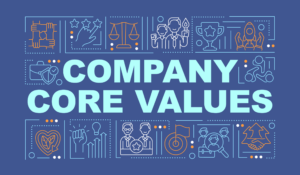In today’s data-driven landscape, the ability to pinpoint insights is imperative. Thankfully, today’s technology empowers businesses to collect, distill and analyze data based on multiple factors and criteria. Although you may already be engaging in data collection best practices when it comes to sales and marketing to your prospects and customers; however, you may not be applying the same due diligence to employee data collection.
With an increased focus on employee experience among today’s employers (in many cases, equal to commitments to customer and candidate experience), the ability to accumulate and analyze employee data, and particularly, the ability to apply what you’ve learned toward improving your employee experience, is especially critical.
Your employee survey app offers the flexibility, cutting-edge technology, and back-end chops to help you collect data. But before you get started, stop and think about how to best segment your employee surveys. Here’s why segmentation of your employee surveys is so important:
Your survey will feel more authentic if it “speaks” to your employees.
Many employers solicit feedback from their employees with generic-sounding surveys…and do nothing with that feedback. As a result, many employees – particularly Millennials and Generation X employees – may not feel that completing employee surveys is worth their while.
Feeling worried that your surveys are too generic? If your employee surveys contain one or more of the following questions, they may qualify for that dubious distinction:
- On a scale of 1 to 10, how happy are you with your job?
- Would you refer a friend to apply for a job at this company?
- Do you feel appreciated by your managers or bosses?
- Have you been able to further your career goals in your current position?
- Do you feel like your superiors accept and consider your feedback?
- How would you describe our workplace culture?
There’s nothing inherently wrong with these questions; however, they don’t speak to your employees. In many cases, they are unlikely to make your employees feel “heard.”
Your employee experience is vastly different across departments.
Think about all the different people you employ, from customer service to human resources to accounting. Everyone.
The challenges, frustrations, and most importantly, opportunities within those departments could be vastly different. Perhaps sales could let you know they need a better CRM to maximize their time. Maybe the HR office needs to be remodeled for better collaboration, or customer service needs more ability to delight customers without management approval.
All are vastly different requests, but without the right questions to pull out real, usable feedback, you may never know they’re important to your employees. And without knowing, you can’t do anything about them.
You know how this story ends. In time, employees who don’t feel heard or valued go elsewhere. Productivity can be negatively impacted, and ultimately, retention takes a hit. It’s a slippery slope.
Employees can provide more useful feedback when questions are properly targeted.
We’re seeing progress when it comes to employee surveys. More employers are using employee survey apps, more frequently. But as touched upon in the previous point, segmentation allows you to collect more accurate data because you are creating questions specifically for a particular employee or group of employees.
It is easy to customize your survey to fit the people who will fill it out. Consider the role the employee plays in your organization and the ways in which he or she contributes to your success. Additionally, you need a goal for the survey. Soliciting general feedback rarely provides actionable insights that can impact your bottom line. Identify the specific area you hope to improve and craft your survey specifically around that topic.
For instance, do you want to know about employee satisfaction? Are you interested in learning employee insights about new technology? Your goals and segments will help you create more targeted questions.
In addition to segmenting your employees by their roles in the company, you can segment in other ways as well, including:
- Age: Learn how people of different generations respond to certain motivational tools in the workplace.
- Years active: Sometimes, knowing how long someone has been with your company can shed important light on insights and feedback gathered during surveys.
- Hierarchy: Understanding management levels and hierarchy can provide additional insight and perspective on usable data.
How could employee surveys improve your productivity and retention rates?
Segmentation of your employee surveys can open up avenues to better, more actionable feedback and more accurate data to help your organization move forward. HubEngage is a powerful employee engagement app that allows you to easily create and disseminate engaging surveys to your employees’ preferred devices (and so much more). To learn more and see HubEngage in action, contact us to schedule your free demo.














